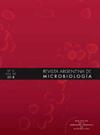[阿根廷2个奶牛场应用管理、诊断和疫苗接种工具对牛病毒性腹泻病毒的现场控制经验报告]。
IF 2.1
4区 生物学
Q4 MICROBIOLOGY
引用次数: 0
摘要
牛病毒性腹泻病毒(BVDV)在国际畜牧业和阿根廷造成重大经济损失,该病毒在阿根廷的流行率很高。在高流行情况下,一旦发现并隔离持续感染的动物,就可以通过接种疫苗来控制BVDV感染。本研究对圣达菲省2个奶牛场采用诊断、管理和疫苗接种相结合的方法,在田间条件下控制BVDV传播的可行性进行了评价。采用商业elisa检测NS3 (P80)蛋白或针对该蛋白的抗体,rt -巢式PCR检测病毒基因组,并进行病毒血清中和以评估疫苗效力。养殖场平均血清阳性率为58.4%,持续感染动物率为2.4%。分离出持续感染的动物,并给它们接种含有灭活BVDV的商业联合疫苗后,流产率显著降低(p本文章由计算机程序翻译,如有差异,请以英文原文为准。
Reporte de una experiencia de control del virus de la diarrea viral bovina en 2 tambos de Argentina aplicando herramientas de manejo, diagnóstico y vacunación
Bovine viral diarrhea virus (BVDV) causes significant economic losses in the international livestock industry and in Argentina, where it circulates at high prevalence. Under high prevalence conditions, BVDV infections are controlled through vaccination once persistently infected animals are identified and segregated. This study evaluated the feasibility of controlling BVDV circulation under field conditions by combining diagnosis, management measures, and vaccination in 2 dairy farms in the province of Santa Fe. Commercial ELISAs were used for the detection of the NS3 (P80) protein or antibodies against this protein as well as an RT-nested PCR for the detection of the viral genome, and viral seroneutralization to assess vaccine efficacy. The average seroprevalence of the farms was 58.4%, with a persistently infected animal rate of 2.4%. After segregating the persistently infected animals and vaccinating them with a commercial combined vaccine containing inactivated BVDV, abortion rates significantly decreased (p < 0.05) in farm 1 (from 20.5 to 11.6%) and in farm 2 (from 34 to 23.4%) during the second year of the control strategy. Conception rates increased from 29 to 33% in farm 1 during the first year, while in farm 2, the increase was 7 points during the second year. This methodology achieved conditions in which BVDV ceased to circulate, constituting the first controlled report on BVDV management in dairy farms using tools available to producers in Argentina.
求助全文
通过发布文献求助,成功后即可免费获取论文全文。
去求助
来源期刊

Revista Argentina de microbiologia
MICROBIOLOGY-
CiteScore
3.30
自引率
0.00%
发文量
46
审稿时长
>12 weeks
期刊介绍:
La Revista Argentina de Microbiología es una publicación trimestral editada por la Asociación Argentina de Microbiología y destinada a la difusión de trabajos científicos en las distintas áreas de la Microbiología. La Asociación Argentina de Microbiología se reserva los derechos de propiedad y reproducción del material aceptado y publicado.
 求助内容:
求助内容: 应助结果提醒方式:
应助结果提醒方式:


